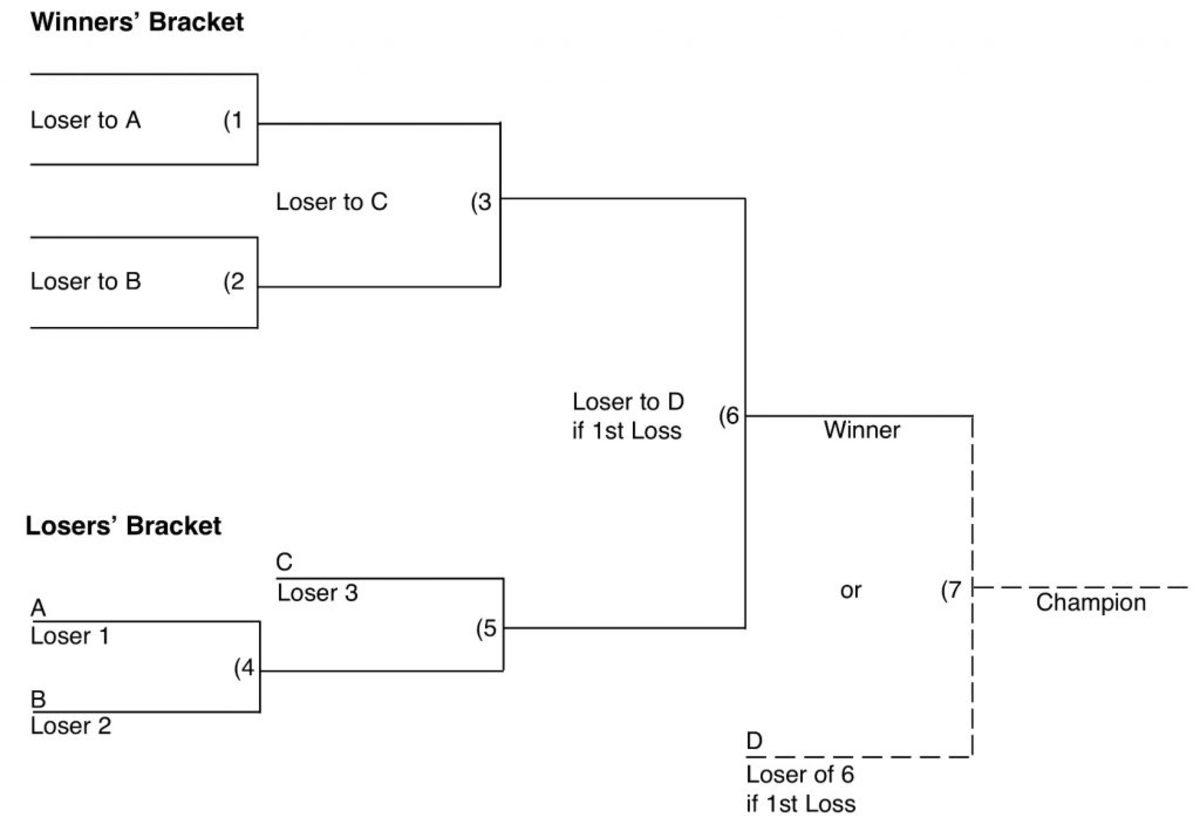Explaining the NCAA Baseball Tournament Format
OMAHA, Neb. - The field of 64 is finally set, and the 2022 NCAA Baseball Tournament is set to begin this weekend!
Unlike the men’s and women’s basketball tournaments, the baseball edition does not follow the standard 64-team single elimination style format. So as a result, most people who aren’t all that familiar with the tournament’s inner workings could find themselves easily confused as to how the tournament actually works. It will be a lot of information to take in, but the aim of this piece is to help educate everyone on how the tournament works.
Essentially, the tournament is a combination of both the double elimination and best-of-three tournament formats. Regionals are the former, Super Regionals are the latter, and the College World Series is a combination of both. If you're still confused, we’ll take this one step at a time.
National Seeds
Before any games get underway, it first begins with the seeding. The top 16 teams of the tournament are assigned what is called a “national seed”. This helps shape the tournament and designate who is playing who, and where they are playing upon advancing to the next round. Each team that is assigned a national seed is granted hosting rights for the regionals round.
The only way a national seed cannot host a regional is if there are scheduling conflicts with other tenants that use the host team’s facility, or if the team’s facility do not meet proper standards to house all potential media. This rule also applies to Super Regionals, however, it has only come into play twice in the tournament’s history.
Since there are 16 national seeds, obviously, this also means there are 16 host sites. All 16 Regionals are aligned to fit your standard 16-team single elimination tournament. Meaning the No. 1 national seed Regional is matched up against the No. 16 national seed regional, the No. 2 seed against the No. 15 seed, and so on and so forth. This comes into play in all levels of the NCAA Baseball Tournament, including all the way up to the CWS Final.
Regionals
Now onto the Regionals themselves. A Regional is a four-team double elimination tournament, with the national seed in the regional being the No. 1 seed. It follows this format:

For the first two games of the Regional, the No. 1 seed will play the No. 4 seed, the No. 2 seed will play the No. 3 seed, and the rest of the Regional will play itself out from there. The winner of the Regional will then advance to a Super Regional.
Super Regionals
A Super Regional is a lot more straight-forward than a Regional, as it simply consists of a best-of-three series between only two teams. Determining who is the host of the Super Regional between the two regionals winner is determined by the following:
- The highest regional seed in the super regional will be the host. For example, if one regional winner was a No. 1 seed in their regional and the other regional winner was a No. 3 seed in their regional, the No. 1 seed will host.
- If both Regionals winners are national seeds, then the higher national seed will host.
- If they are equally seeded teams, the official tiebreaker as stated on the NCAA’s website is “the committee shall review the hosting proposals according to the site selection criteria (e.g., quality and availability of the facility, revenue potential and other available accommodations) to determine the host. If only one of the teams has submitted a proposal, that team shall host if the proposal is acceptable.”
Once the host site is determined, the two teams play their best-of-three series, with the winner advancing to the College World Series in Omaha, Nebraska.
College World Series
While Regionals are double elimination, and Super Regionals are best-of-three, the College World Series cranks it up a notch and combines both formats. The remaining eight teams that punched their ticket to Omaha will square off in a pair of four-team double elimination tournaments, with the winners of each tournament facing off in the CWS Final, which is a best-of-three series.
The placement of each team in the College World Series is not random, and follows the model of the initial Regional pairings. For example, if all top 8 national seeds made it to the CWS, Bracket 1 would consist of No. 1 vs. No. 8 and No. 4 vs. No. 5, while Bracket 2 would consist of No. 3 vs. No. 6 and No. 2 vs. No. 7, vaguely resembling your standard eight-team single elimination bracket.
If you have any more confusion as to how the tournament works, follow the link here for a detailed interactive bracket on the NCAA’s website.
(Photo of CWS logo: Calvin Mattheis - News Sentinel via Imagn Content Services, LLC)
You can follow Louisville Report for future coverage by liking us on Facebook, Twitter and Instagram:
Facebook - @LouisvilleReport
Twitter - @UofLReport
Instagram - @louisville_report
You can also follow Deputy Editor Matthew McGavic at @Matt_McGavic on Twitter
